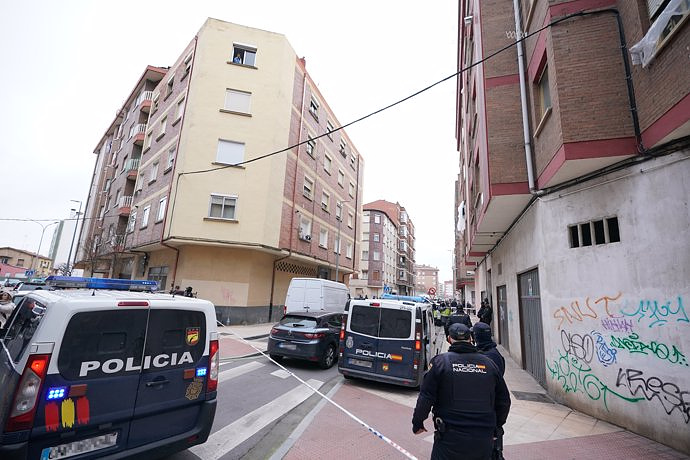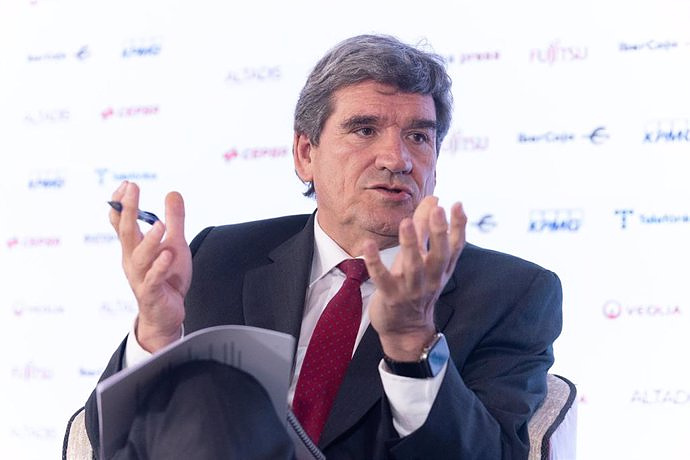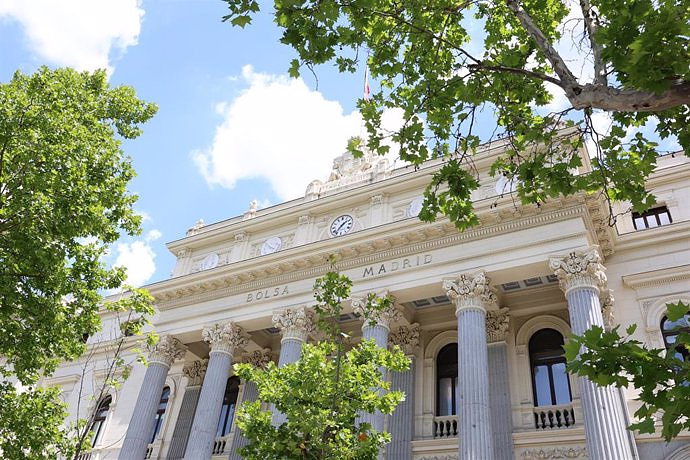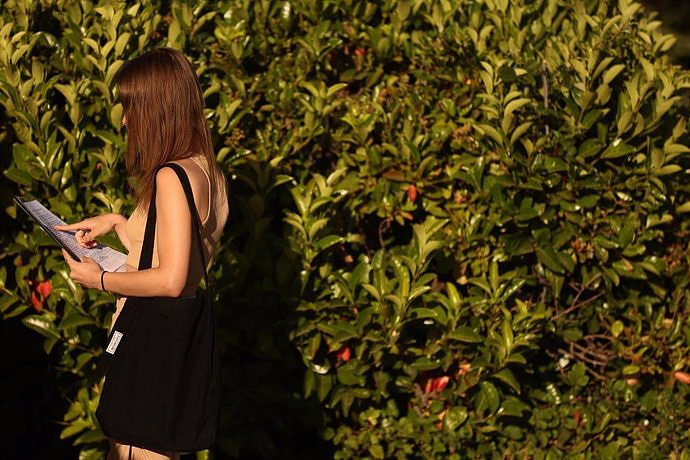The AVT wants 24 years in prison and remembers that it was against Spain's support for Ukraine
MADRID, 22 Mar. (EUROPA PRESS) -
The Prosecutor's Office of the National Court requests a sentence of 22 years in prison for the Burgos retiree Pompeyo González who in 2022 was arrested and prosecuted as the alleged author of sending explosive letters to several institutions, including the Moncloa Palace, the Ministry of Defense, the US Embassy and the Ukrainian Embassy.
In the indictment, collected by Europa Press, the Public Prosecutor's Office charges him with a crime of terrorism resulting in injuries - for those suffered by the Ukrainian embassy employee Mykola Velychko - and a crime of manufacture, possession, placement and use of explosive, flammable or incendiary devices for terrorist purposes.
The Prosecutor's Office is also interested in absolute disqualification, and special disqualification for profession or educational trades. In addition, he requests that he be ordered to compensate the injured worker with 1,500 euros for the injuries suffered.
The Association of Victims of Terrorism (AVT) requests for the retiree from Miranda de Ebro (Burgos) the sentence of 24 years in prison for the same crimes and recalls that the man "contrary to the support provided to the Ukrainian nation by the Government of Spain" built artifacts that were sent by postal mail to various institutions.
The AVT explains in its indictment, to which Europa Press has also had access, that the "postal device" type explosive devices manufactured by the defendant presented similarities in their structure and composition and "had mechanical activation, pyrotechnic initiation and all the elements necessary for its correct functioning".
And he adds that the amount of explosive and its arrangement in the device "would be sufficient to produce injuries of different degrees depending on the proximity and the possible organs affected, both by the explosion of the substance itself and by the impact of the incorporated shrapnel. (lead poles)".
It should be remembered that it was in June 2023 when the judge of the National Court José Luis Calama proposed trying the 74-year-old man for terrorism and use of explosive devices for terrorist purposes as the alleged author of sending six letters containing homemade explosives to, among others, the President of the Government, Pedro Sánchez.
This was stated in an order in which the magistrate recalled that the Minister of Defense, Margarita Robles, the facilities of the Instalaza company in Zaragoza, the embassies of the United States and Ukraine in Madrid and the satellite center were also the subject of these explosive letters. from the Torrejón de Ardoz Air Base.
In his resolution, the magistrate attributed the crime of terrorism to Pompeyo González because although there is no indication that he belongs to or collaborates with an organized terrorist gang or group, the actions he is accused of, the context in which it occurs (the war in Ukraine ), the feasibility of the devices exploding (as happened in the case of the Ukrainian Embassy) and the recipients of their actions, "evidence that the purpose of disturbing the peace is present in the mind of said defendant (...) public".
He also pointed out that with his letters he sought to convey the message that these actions were carried out by people linked to Russia "as repression of the interests of Spain and the United States as a consequence of their support for Ukraine in the face of the Russian occupation." And that his interest was "to force public powers (...) to refrain from the support shown in favor of Ukraine in the face of Russian aggression."
The magistrate pointed out that Pompeyo González, who was released with precautionary measures in April 2023, was an "antagonist" of that Spanish and North American support for Ukraine, and that his devices had a mechanical activation system, a pyrotechnic initiation system. and an explosive charge of 7 to 10 grams.
Regarding the rational evidence of criminality that places him as the author of the letters, Calama recalled that during the entry and search of his home in January 2023, various cylindrical rods were found that could correspond to those that housed the incendiary pistons of the homemade explosive devices. . In addition, screws and springs similar to the firing pin used in the letters and drills with precision drill bits similar to those used to make the aforementioned artifacts were found.
He added to this that from the analysis of his mobile device, it was found that he had installed the RT Noticias applications - Russia Today - and Sputnik, which are the Russian government media.
Another indication is that the cardboard envelopes addressed to the Ministry of the Presidency, the US Embassy, and the Torrejón de Ardoz base, which did not explode, were found postmarked by the Automated Treatment Center (CTA) of Valladolid, code number 47. And the Images captured by the security cameras of that center showed that these artifacts had been processed there.
When tracing the envelopes in reverse, it was seen that the routes of the delivery trucks made it possible to verify that the shipments "could have departed from different outdoor mailboxes in the town of Burgos."
Furthermore, the analysis of the stamped stamps determined that the only two stores where they could be purchased were two tobacconists located in Burgos. Regarding the envelopes, the magistrate points out that their characteristics led to an online sales website, which once requested provided that Pompeyo González had acquired envelopes with those characteristics for Miranda de Ebro.
On the other hand, he added the evidence collected from Amazon about the purchases he made of pure potassium nitrate, cable with wick, switches, copper filaments and incandescent bulbs. Also about the acquisition of 100 x 50 mm adhesive stickers, 25 x 23 mm hinges, all kinds of screws, precision drill bits, templates for drawing numbers and the alphabet, templates for drawing numbers and letters of the alphabet, etc.
"The comparison and scientific analysis of these acquired products and those used in the making of the envelopes and boxes (...) allows us to verify that the white self-adhesive labels acquired are of the same type as those that were colored on the back of the envelopes (...); that the templates for drawing numbers and letters (...) were used to write the recipients and shipping addresses," he indicates. He adds that the hinges and the twist drill also correspond to those used.

 Exploring Cardano: Inner Workings and Advantages of this Cryptocurrency
Exploring Cardano: Inner Workings and Advantages of this Cryptocurrency Seville.- Economy.- Innova.- STSA inaugurates its new painting and sealing hangar in San Pablo, for 18 million
Seville.- Economy.- Innova.- STSA inaugurates its new painting and sealing hangar in San Pablo, for 18 million Innova.- More than 300 volunteers join the Andalucía Compromiso Digital network in one month to facilitate access to ICT
Innova.- More than 300 volunteers join the Andalucía Compromiso Digital network in one month to facilitate access to ICT Innova.-AMP.- Ayesa acquires 51% of Sadiel, which will create new technological engineering products and expand markets
Innova.-AMP.- Ayesa acquires 51% of Sadiel, which will create new technological engineering products and expand markets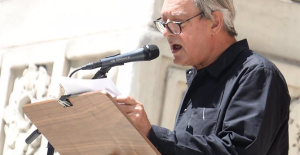 Prominent American writer Paul Auster dies at 77 from lung cancer
Prominent American writer Paul Auster dies at 77 from lung cancer RELEASE: Rendeavor Expands High-Speed Internet Access to Local Communities Around Tatu, Kenya
RELEASE: Rendeavor Expands High-Speed Internet Access to Local Communities Around Tatu, Kenya Real Madrid saves a draw in Munich and will appeal again to the Bernabéu
Real Madrid saves a draw in Munich and will appeal again to the Bernabéu The Congress of Argentina approves the omnibus law that allows the privatization of some public companies
The Congress of Argentina approves the omnibus law that allows the privatization of some public companies How Blockchain in being used to shape the future
How Blockchain in being used to shape the future Not just BTC and ETH: Here Are Some More Interesting Coins Worth Focusing on
Not just BTC and ETH: Here Are Some More Interesting Coins Worth Focusing on Valencia unanimously approves the ordinance to allocate spaces to test innovative initiatives
Valencia unanimously approves the ordinance to allocate spaces to test innovative initiatives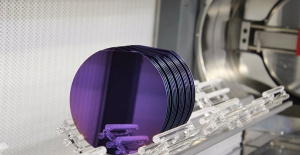 UPV researchers promote a paid master's degree as a "talent factory" in integrated photonics
UPV researchers promote a paid master's degree as a "talent factory" in integrated photonics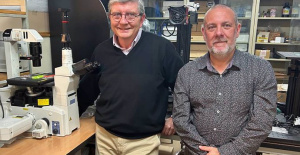 A spin-off of the UV works on obtaining high-resolution 3D biomedical images in real time
A spin-off of the UV works on obtaining high-resolution 3D biomedical images in real time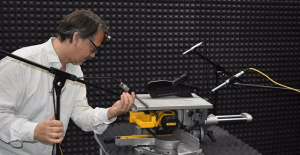 They create a bank of machinery sounds to prevent breakdowns through artificial intelligence
They create a bank of machinery sounds to prevent breakdowns through artificial intelligence A million people demonstrate in France against Macron's pension reform
A million people demonstrate in France against Macron's pension reform Russia launches several missiles against "critical infrastructure" in the city of Zaporizhia
Russia launches several missiles against "critical infrastructure" in the city of Zaporizhia A "procession" remembers the dead of the Calabria shipwreck as bodies continue to wash up on the shore
A "procession" remembers the dead of the Calabria shipwreck as bodies continue to wash up on the shore Prison sentences handed down for three prominent Hong Kong pro-democracy activists
Prison sentences handed down for three prominent Hong Kong pro-democracy activists ETH continues to leave trading platforms, Ethereum balance on exchanges lowest in 3 years
ETH continues to leave trading platforms, Ethereum balance on exchanges lowest in 3 years Investors invest $450 million in Consensys, Ethereum incubator now valued at $7 billion
Investors invest $450 million in Consensys, Ethereum incubator now valued at $7 billion Alchemy Integrates Ethereum L2 Product Starknet to Enhance Web3 Scalability at a Price 100x Lower Than L1 Fees
Alchemy Integrates Ethereum L2 Product Starknet to Enhance Web3 Scalability at a Price 100x Lower Than L1 Fees Mining Report: Bitcoin's Electricity Consumption Declines by 25% in Q1 2022
Mining Report: Bitcoin's Electricity Consumption Declines by 25% in Q1 2022 Oil-to-Bitcoin Mining Firm Crusoe Energy Systems Raised $505 Million
Oil-to-Bitcoin Mining Firm Crusoe Energy Systems Raised $505 Million Microbt reveals the latest Bitcoin mining rigs -- Machines produce up to 126 TH/s with custom 5nm chip design
Microbt reveals the latest Bitcoin mining rigs -- Machines produce up to 126 TH/s with custom 5nm chip design Bitcoin's Mining Difficulty Hits a Lifetime High, With More Than 90% of BTC Supply Issued
Bitcoin's Mining Difficulty Hits a Lifetime High, With More Than 90% of BTC Supply Issued The Biggest Movers are Near, EOS, and RUNE during Friday's Selloff
The Biggest Movers are Near, EOS, and RUNE during Friday's Selloff Global Markets Spooked by a Hawkish Fed and Covid, Stocks and Crypto Gain After Musk Buys Twitter
Global Markets Spooked by a Hawkish Fed and Covid, Stocks and Crypto Gain After Musk Buys Twitter Bitso to offset carbon emissions from the Trading Platform's ERC20, ETH, and BTC Transactions
Bitso to offset carbon emissions from the Trading Platform's ERC20, ETH, and BTC Transactions Draftkings Announces 2022 College Hoops NFT Selection for March Madness
Draftkings Announces 2022 College Hoops NFT Selection for March Madness